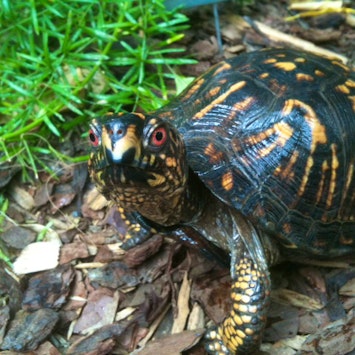When to help a wild animal and when to leave it alone
Discovery Place Nature

It’s spring, and with this season comes lots of wildlife out and about. That means it’s the busiest time of year for wildlife rehabilitators because sometimes those wild animals are in need of assistance. Here are some suggestions for what to do when you encounter an animal that you believe might need help:
Handling Wild Animals
Always be careful when dealing with wild animals. As someone who helps animals when I can, I carry a kit in my car which has disposable gloves, two sizes of animal carriers, leather gloves, a snake hook, a loose-fitting jacket and an old bath towel.
This has given me all the tools I’ve needed to bring injured owls, turtles, snakes, vultures, squirrels, raccoons and opossums to rehabbers quickly and easily.
Be aware of the signs of rabies in our native species and, when in doubt, leave an animal alone rather than putting yourself in danger. If you need to stop traffic to help an animal, find a helper before trying to stop vehicles.
Injured Animals
If the animal has a visible injury, transport it into a safe container like a pet carrier, cardboard box or plastic tote (with air holes) and immediately contact a licensed wildlife rehabilitator.
If you have a safe area outside, leave the container outside. Otherwise, keep the animal in the darkest, quietest place you have available (an attached garage or basement, for example). Don’t let your pets or children go near the animal, even for a peek. Injured animals are stressed and may defend themselves if they feel threatened.
If you cannot reach a rehabilitator, call Animal Control or your veterinarian for advice. Do not try to render medical assistance or give food/water to an animal unless explicitly told to do so by an expert in wildlife rehabilitation.
Orphaned Animals
Many animals believed to be “orphaned” are either waiting for their parent (who is nearby) to return or they are already independent. Lots of baby animals look very helpless when they’re actually just fine, like fledgling birds, young opossums and newly weaned rabbits.
The general guidelines say to leave young animals alone unless they are visibly hurt, have been in a pet’s mouth or have been crying non-stop. Remove curious pets and children from the baby animal’s area and take photos or video and ask a rehabber for the next steps before removing the animal from the area.
Don’t get any ideas of keeping this orphaned critter as a pet. It is illegal for the public to keep most wild animals in their possession, plus they really make terrible pets!
While there are many situations in the spring which may involve wildlife in trouble, by helping where we can and knowing when NOT to chip in, everyone can have an impact and ensure that wild animals stay where they belong- in the wild!

